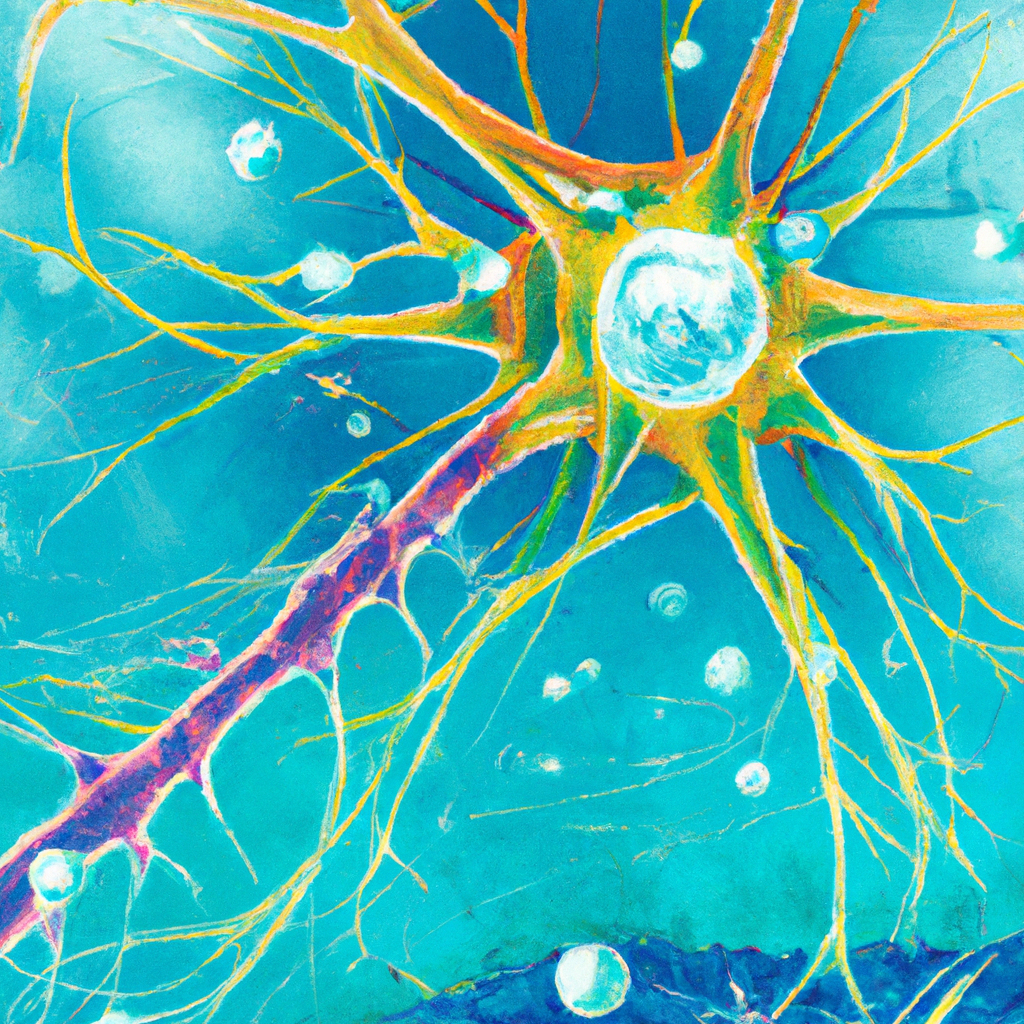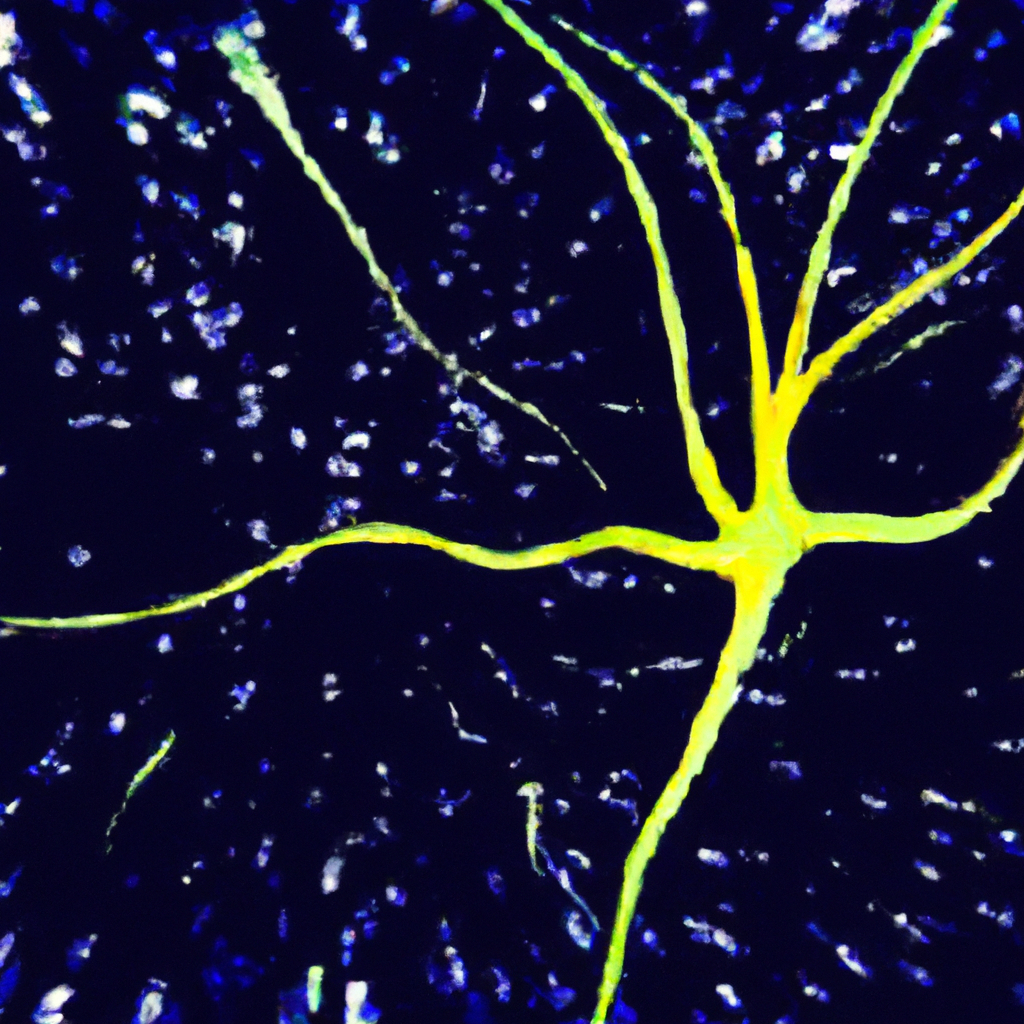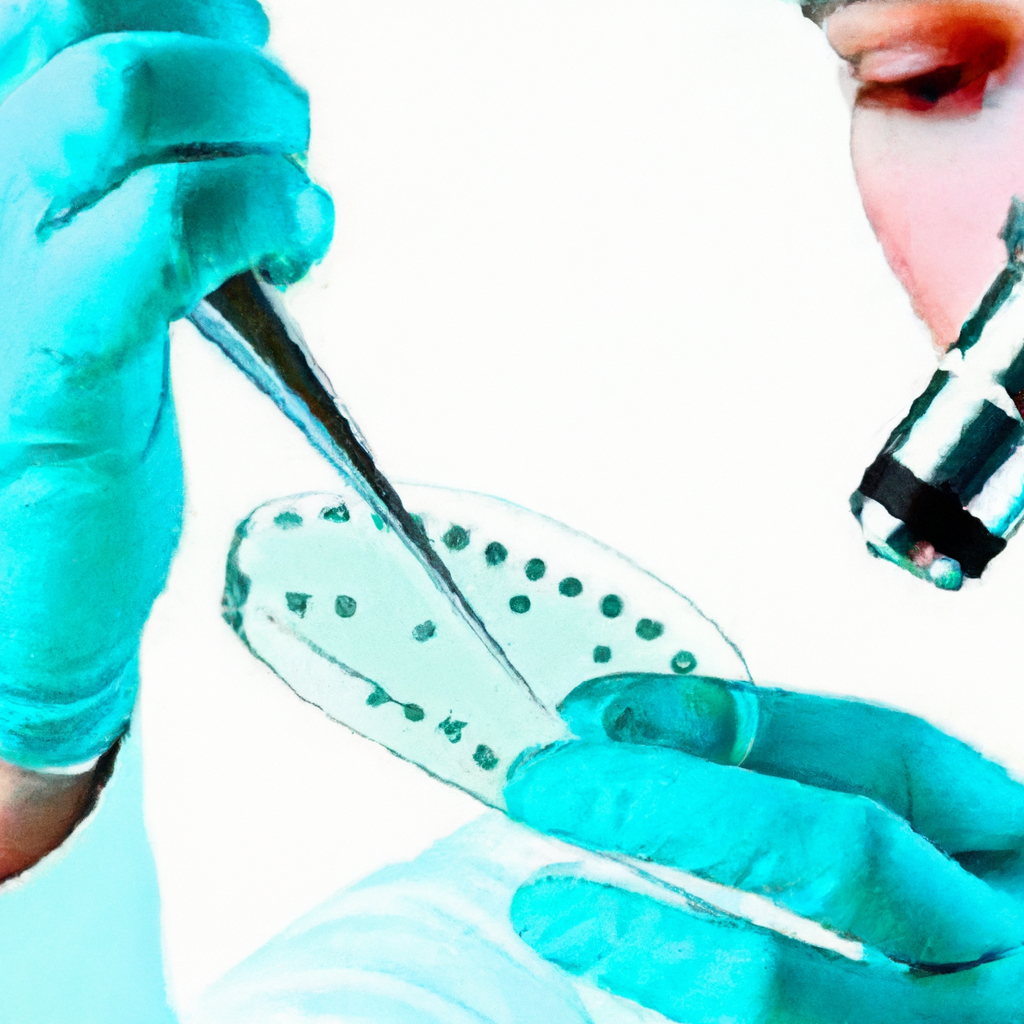If you’ve been searching for new possibilities in the realm of medical advancements, you may have come across the term “stem cell therapy.” But what exactly is it and can it offer relief for those suffering from neurological disorders in Malaysia? Stem cell therapy holds incredible promise in the field of medical research, with the potential to revolutionize the way we treat various conditions. In this article, we will explore the potential of stem cell therapy for neurological disorders, diving into the latest findings, discussing its benefits and limitations, and ultimately helping you understand how it could potentially provide relief for those in need. So, let’s embark on this journey together and discover the fascinating world of stem cell therapy!

Understanding Neurological Disorders
Defining Neurological Disorders
Neurological disorders are conditions that affect the brain, spinal cord, and nerves throughout the body. These disorders can have a significant impact on a person’s daily life and overall well-being. They can affect movement, cognition, sensory perception, and other essential functions.
Some common neurological disorders include stroke, Parkinson’s disease, multiple sclerosis, and Alzheimer’s disease. Each of these disorders presents unique challenges and requires specialized treatment approaches. Understanding the different types of neurological disorders is crucial in finding effective solutions for those affected.
Types of Neurological Disorders
Neurological disorders can be categorized into various types based on their symptoms and underlying causes. Some of the most prevalent types of neurological disorders include:
-
Stroke: This occurs when the blood supply to the brain is disrupted, leading to the death of brain cells. Strokes can cause a wide range of symptoms, including paralysis, speech difficulties, and cognitive impairments.
-
Parkinson’s Disease: Parkinson’s disease is a progressive neurological disorder that affects movement. Common symptoms include tremors, muscle stiffness, and difficulty with balance and coordination.
-
Multiple Sclerosis: Multiple sclerosis is an autoimmune disease that affects the protective covering of nerves in the central nervous system. This can result in a wide range of symptoms, such as numbness, weakness, and coordination problems.
-
Alzheimer’s Disease: Alzheimer’s disease is a degenerative brain disorder that primarily affects memory and cognitive function. It is the most common form of dementia and can severely impact a person’s ability to carry out daily tasks.
By understanding the specific characteristics and challenges associated with each type of neurological disorder, healthcare professionals can tailor treatment options to address the unique needs of each patient.
Introduction to Stem Cell Therapy
What are Stem Cells?
Stem cells are unique cells that have the remarkable ability to develop into different types of cells in the body. They can divide rapidly and have the potential to replace damaged or diseased cells in various tissues and organs. Stem cells can be derived from various sources, including embryos, adult tissue, and umbilical cord blood.
How Does Stem Cell Therapy Work?
Stem cell therapy involves the use of stem cells to treat or prevent a disease or condition. The stem cells can be manipulated in a laboratory to differentiate into specific cell types and then transplanted into the patient’s body. Once in the body, these transplanted cells can integrate into damaged tissues and promote healing and regeneration.
Stem cell therapy can be administered through various routes, such as intravenous injection, intrathecal injection, or direct injection into the affected area. The specific method depends on the type and location of the neurological disorder being treated.
Benefits of Stem Cell Therapy
Stem cell therapy offers several potential benefits for individuals with neurological disorders. Some of the key advantages include:
-
Regeneration of Damaged Tissues: Stem cells have the potential to regenerate damaged tissues and restore lost function. This can be particularly beneficial for conditions where the body’s natural ability to heal is limited, such as stroke or spinal cord injuries.
-
Reduced Inflammation and Immune Response: Stem cells can modulate the immune system and reduce inflammation in the body. This can help alleviate symptoms associated with autoimmune disorders like multiple sclerosis.
-
Slowing Disease Progression: Stem cell therapy has shown promise in slowing the progression of certain neurological disorders, such as Parkinson’s disease and Alzheimer’s disease. This can provide individuals with a better quality of life and more time to engage in daily activities.
While stem cell therapy holds great potential, it’s important to note that much research is still needed to fully understand its long-term effects and optimize its therapeutic benefits.
Current Treatment Options for Neurological Disorders
Limitations of Traditional Treatments
Traditional treatment options for neurological disorders often focus on symptom management rather than addressing the underlying cause of the disease. Medications can help alleviate symptoms, but they may not provide a cure or halt disease progression. Additionally, some medications can have side effects that may further impact a patient’s well-being.
Surgical interventions, such as deep brain stimulation for Parkinson’s disease, can provide relief for certain symptoms but are invasive and carry risks. Furthermore, not all neurological disorders have well-established surgical treatment options.
Promising Advances in Neurological Disorder Treatments
Recent advances in medical research have paved the way for more innovative and targeted treatment options for neurological disorders. These advances include:
-
Gene Therapies: Gene therapies aim to modify the genes responsible for neurological disorders, potentially correcting the underlying genetic cause of the disease. This approach shows promise in treating genetic forms of conditions like Parkinson’s disease.
-
Deep Brain Stimulation: Deep brain stimulation uses electrical impulses to modulate brain activity and alleviate symptoms. It has shown effectiveness in improving motor symptoms in Parkinson’s disease and essential tremor.
-
Neuromodulation: Neuromodulation techniques involve the use of devices to stimulate specific nerves or brain regions, helping to alleviate symptoms such as chronic pain or movement disorders.
These advances provide hope for individuals with neurological disorders, but further research and development are still necessary to make these treatments more accessible and improve their long-term outcomes.
The Potential of Stem Cell Therapy
Stem Cell Therapy for Stroke Patients
Stroke is a leading cause of long-term disability worldwide. Stem cell therapy offers potential benefits for stroke patients by promoting tissue regeneration and enhancing functional recovery.
Preclinical studies have shown that stem cell therapy can improve motor function, reduce physical disability, and promote neuroplasticity in animals with induced stroke. This exciting potential has paved the way for human clinical trials to evaluate the safety and efficacy of stem cell therapy for stroke patients.
Early results from clinical trials indicate that stem cell therapy is safe and well-tolerated in stroke patients. While further research is needed to establish its long-term effectiveness, stem cell therapy holds promise as a potential treatment option for those affected by stroke.
Stem Cell Therapy for Parkinson’s Disease
Parkinson’s disease is a neurodegenerative disorder characterized by the loss of dopamine-producing cells in the brain. Stem cell therapy shows promise for Parkinson’s disease by replenishing the lost dopamine-producing cells and improving motor symptoms.
Several clinical trials have investigated the use of stem cells, including fetal tissue-derived cells and induced pluripotent stem cells, in Parkinson’s disease patients. These trials have demonstrated improvements in motor function and quality of life in some patients. However, further research is needed to optimize the therapeutic potential of stem cell therapy for Parkinson’s disease.
Stem Cell Therapy for Multiple Sclerosis
Multiple sclerosis is an autoimmune disease that causes the immune system to attack the protective covering of nerves in the central nervous system. Stem cell therapy offers a potential solution by modulating the immune system and promoting tissue repair.
Clinical trials exploring the use of stem cell transplantation for multiple sclerosis have shown promising results, with some patients experiencing reduced disease activity and improved neurological function. However, more studies are needed to define the optimal stem cell source, dosage, and timing for the treatment of multiple sclerosis.
Stem Cell Therapy for Alzheimer’s Disease
Alzheimer’s disease is a progressive neurodegenerative disorder that primarily affects memory and cognitive function. While no cure for Alzheimer’s disease currently exists, stem cell therapy offers potential avenues for treatment by replacing damaged neurons and promoting neurogenesis.
Early-stage clinical trials investigating the safety and feasibility of stem cell therapy for Alzheimer’s disease have shown promising results. However, more research is needed to determine the long-term efficacy and safety of this approach.

Regulation and Safety of Stem Cell Therapy in Malaysia
Regulatory Framework for Stem Cell Therapy
In Malaysia, stem cell therapy is regulated by various governmental bodies and adheres to strict guidelines to ensure patient safety and ethical practices. The National Pharmaceutical Regulatory Agency (NPRA) oversees the approval and regulation of stem cell products, ensuring they meet the necessary quality standards.
Medical practitioners providing stem cell therapy must comply with guidelines set by professional bodies such as the Malaysian Medical Council and the Malaysian Medical Association. These guidelines aim to safeguard patient welfare and ensure the responsible and ethical use of stem cell therapy in Malaysia.
Safety and Ethical Considerations
Patient safety and ethical considerations are paramount in stem cell therapy. Adhering to standardized protocols for stem cell processing, storage, and transplantation minimizes the risk of adverse events.
Transparency in informing patients about the risks, benefits, and uncertainties associated with stem cell therapy is crucial to obtaining informed consent. Patients should have a clear understanding of the treatment, its potential outcomes, and the available alternatives.
Ongoing monitoring and evaluation of stem cell therapy outcomes contribute to improving safety and ethical practices. Regular reviews of clinical data and patient feedback help healthcare professionals assess the efficacy and safety of stem cell therapy in real-world settings.
Current Research and Clinical Trials in Malaysia
Ongoing Stem Cell Research in Malaysia
Malaysia has a robust research environment with ongoing studies focused on stem cell therapy for neurological disorders. Collaborative efforts between universities, research institutions, and hospitals contribute to advancing knowledge in this field.
Research areas include the optimization of stem cell-derived therapies, the development of novel cell delivery methods, and the exploration of complementary treatments to enhance stem cell therapy outcomes. These studies aim to address key challenges and improve the effectiveness of stem cell therapy for neurological disorders in Malaysia.
Clinical Trials for Neurological Disorders in Malaysia
Clinical trials play a crucial role in determining the safety and efficacy of stem cell therapy for neurological disorders. In Malaysia, several clinical trials are underway, investigating the use of stem cells for conditions such as stroke, Parkinson’s disease, multiple sclerosis, and Alzheimer’s disease.
These trials help evaluate the potential benefits of stem cell therapy, identify optimal treatment approaches, and contribute valuable data to the global scientific community. Participating in clinical trials gives patients access to cutting-edge treatments and helps shape future treatment paradigms in Malaysia.

Success Stories and Patient Testimonials
Real-life Experiences of Patients in Malaysia
Real-life stories of patients who have undergone stem cell therapy for neurological disorders in Malaysia provide meaningful insights into the impact of this innovative treatment approach.
One such success story involves a stroke survivor who regained mobility and improved overall function after receiving stem cell therapy. Another patient with Parkinson’s disease reported a significant reduction in tremors and improved quality of life following stem cell treatment. These inspiring accounts highlight the potential benefits of stem cell therapy in Malaysia.
Testimonials and Feedback on Stem Cell Therapy for Neurological Disorders
Patient testimonials and feedback regarding stem cell therapy for neurological disorders offer valuable perspectives on treatment outcomes and experiences. Positive feedback often emphasizes improved quality of life, reduced symptoms, and enhanced functional abilities.
Listening to patient testimonials and incorporating their experiences into treatment strategies allows healthcare professionals to continuously improve their approach and provide the best care possible. It is essential to recognize that individual results may vary, and a thorough assessment by qualified medical professionals is necessary to determine the suitability of stem cell therapy for each patient.
Challenges and Limitations of Stem Cell Therapy
Scientific Challenges in Stem Cell Research
Stem cell research continues to face numerous scientific challenges that must be addressed to improve the effectiveness of stem cell therapy for neurological disorders. Some of these challenges include:
-
Cell Survival and Integration: Ensuring the survival and integration of transplanted stem cells into the host tissue remains a complex hurdle. Optimizing transplantation techniques and enhancing stem cell survival are critical to achieving long-lasting therapeutic effects.
-
Differentiation Control: Directing the differentiation of stem cells into specific cell types is crucial to effectively treat neurological disorders. Developing techniques to control and guide cell differentiation will help maximize the therapeutic potential of stem cell therapy.
-
Ethical and Legal Considerations: The use of certain stem cell sources, such as embryonic stem cells, raises ethical concerns. Striking a balance between ethical considerations and scientific progress is essential in advancing stem cell therapy research.
Cost and Accessibility of Stem Cell Therapy in Malaysia
One of the challenges associated with stem cell therapy for neurological disorders is the cost and accessibility of treatment. Stem cell therapy can be expensive, and not all individuals have the financial means to pursue this innovative treatment option.
While efforts are being made to make stem cell therapy more affordable and accessible in Malaysia, there is still a need for wider insurance coverage and public funding options. Collaboration between healthcare providers, government bodies, and research institutions can help address these challenges and ensure that stem cell therapy is available to those who can benefit from it.

Future Perspectives and Potential Breakthroughs
Emerging Technologies in Stem Cell Therapy
The field of stem cell therapy continues to evolve rapidly, with several emerging technologies showing great promise for the treatment of neurological disorders. Some of the notable advancements include:
-
Crispr-Cas9 Gene Editing: The development of precise gene-editing technologies like Crispr-Cas9 opens up new possibilities for targeted modifications of stem cells. This can help overcome genetic abnormalities that contribute to neurological disorders and enhance the therapeutic potential of stem cell therapy.
-
Induced Pluripotent Stem Cells: Induced pluripotent stem cells (iPSCs) offer an exciting avenue for personalized therapies. These cells can be generated from a patient’s own cells, reducing the risk of rejection and avoiding the ethical concerns associated with other stem cell sources.
Collaborative Efforts for Innovative Treatments in Malaysia
Collaboration between academic institutions, healthcare providers, and government bodies is essential for driving innovation and progress in stem cell therapy for neurological disorders. By fostering partnerships and knowledge-sharing, Malaysia can position itself at the forefront of breakthrough treatments and contribute to advancements in the global medical community.
By working together, researchers, healthcare professionals, and policymakers can develop standardized protocols, share clinical data, and implement regulations that promote the safe and effective use of stem cell therapy. These collaborative efforts can accelerate the development and availability of innovative treatments for neurological disorders in Malaysia.
Conclusion
As our understanding of neurological disorders advances, so does the potential for innovative treatments like stem cell therapy. Stem cell therapy offers hope for individuals with neurological disorders, with the potential to regenerate damaged tissues, modulate the immune system, and slow disease progression.
In Malaysia, stem cell therapy for neurological disorders is regulated to ensure patient safety and ethical practices. Ongoing research and clinical trials in Malaysia contribute to expanding our knowledge and improving treatment outcomes.
While challenges and limitations exist, collaborative efforts and emerging technologies hold the promise of breakthroughs in the field of stem cell therapy. With continued research, advancement, and commitment to patient welfare, stem cell therapy has the potential to provide relief and improve the lives of those affected by neurological disorders in Malaysia.





